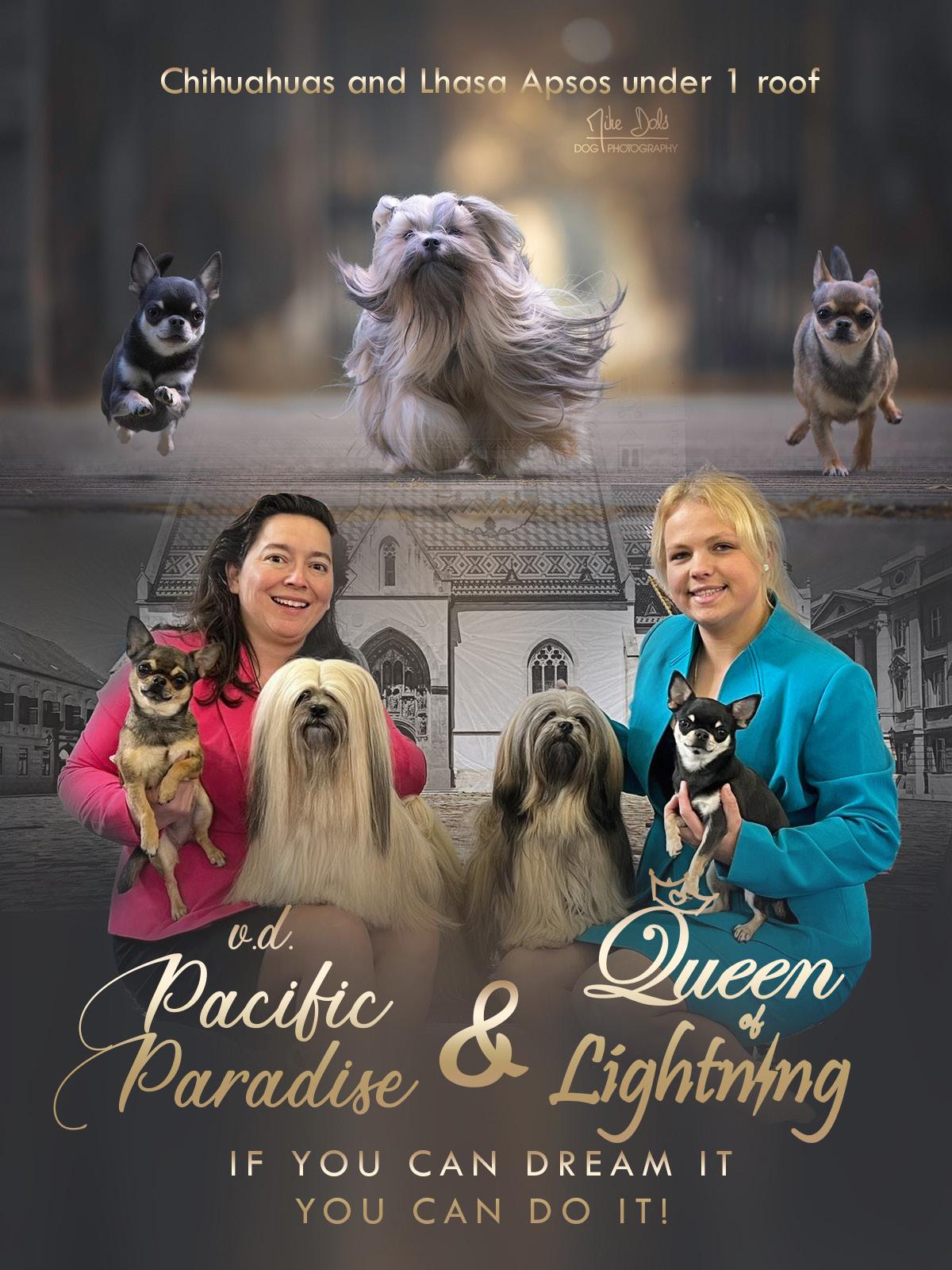
























readers,
In today’s digital age, our mission is to blend convenience with delight for our cherished readers. In a world where judges and exhibitors invest significant time commuting to shows, our phones have become indispensable sources of information and entertainment. Embracing this reality, our team is thrilled to unveil the monthly digital edition of Best in Show Magazine Europe. This digital offering allows us to effortlessly engage with over 50,000 individuals in the sport, including judges, breeders, handlers, and dedicated subscribers each month.
In addition to our digital presence, we are actively curating a wealth of informative content across our social media platforms—from our website to our weekly newsletter, and on Facebook and Instagram. While I personally cherish the tactile experience of a printed copy, I am equally delighted to announce that we will be releasing our printed edition twice this year, culminating in our esteemed Annual edition.
Here’s to embracing the future with enthusiasm and anticipation! We hope you thoroughly enjoy this exceptional edition as we make our triumphant return.
Warm regards,




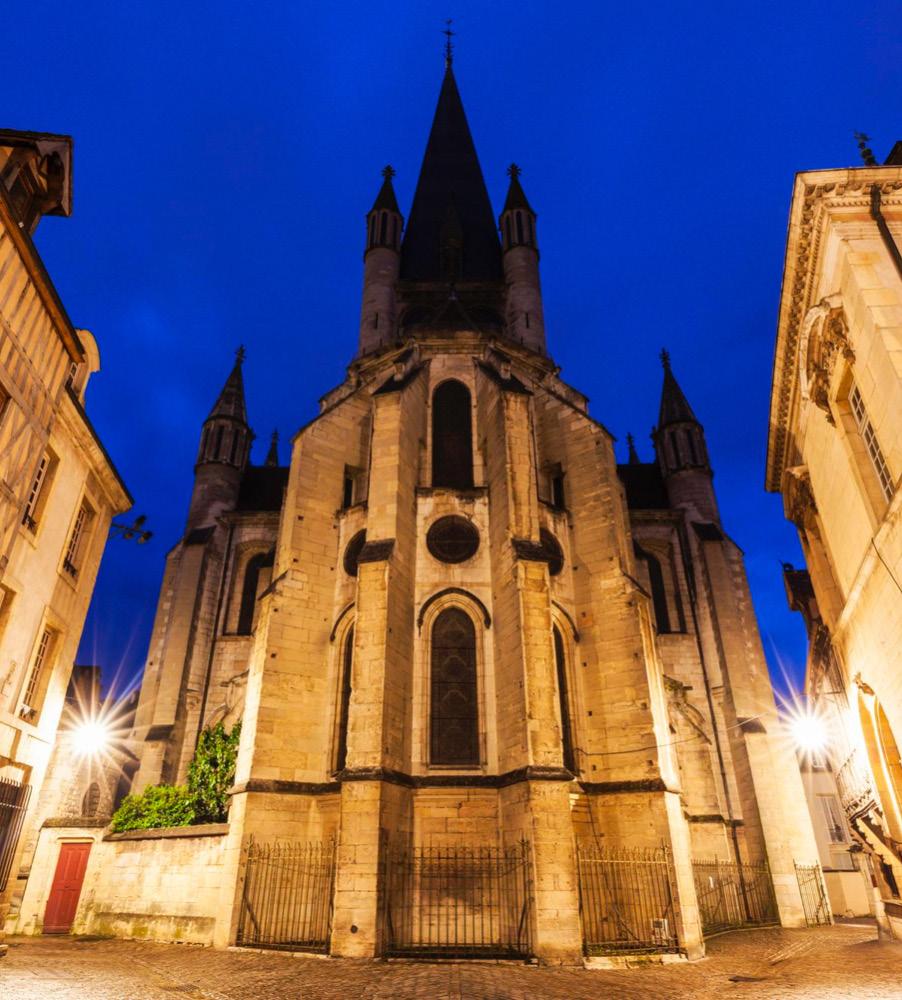


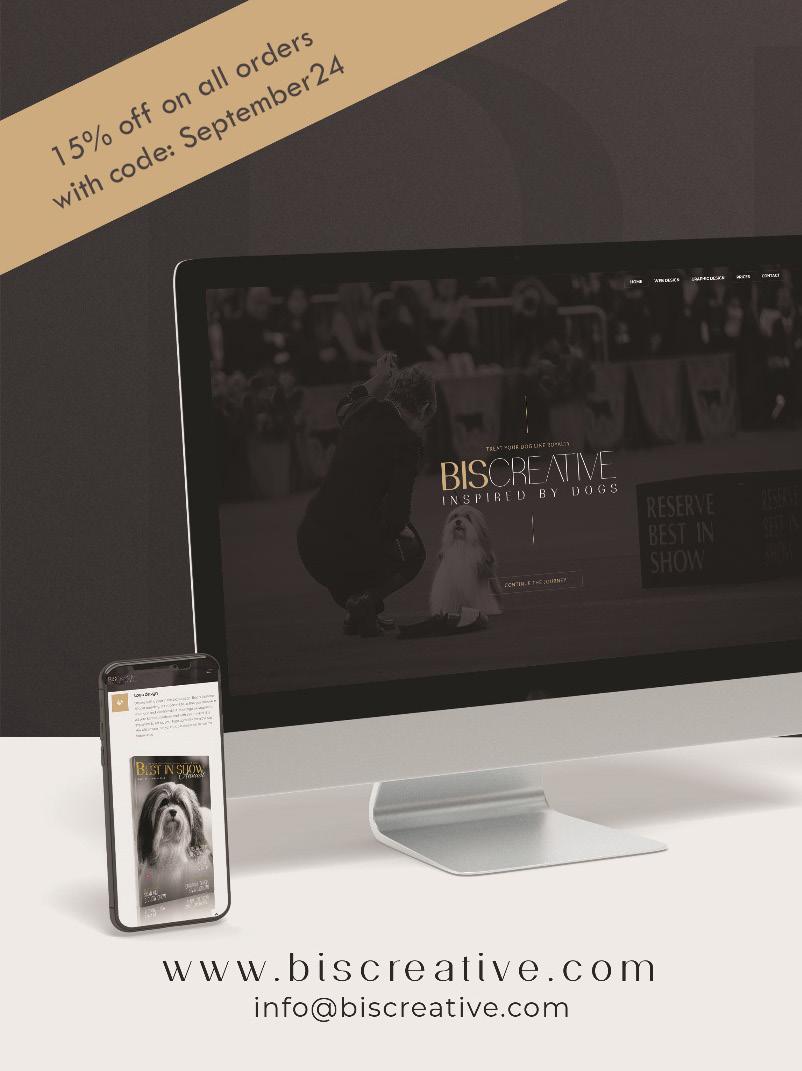



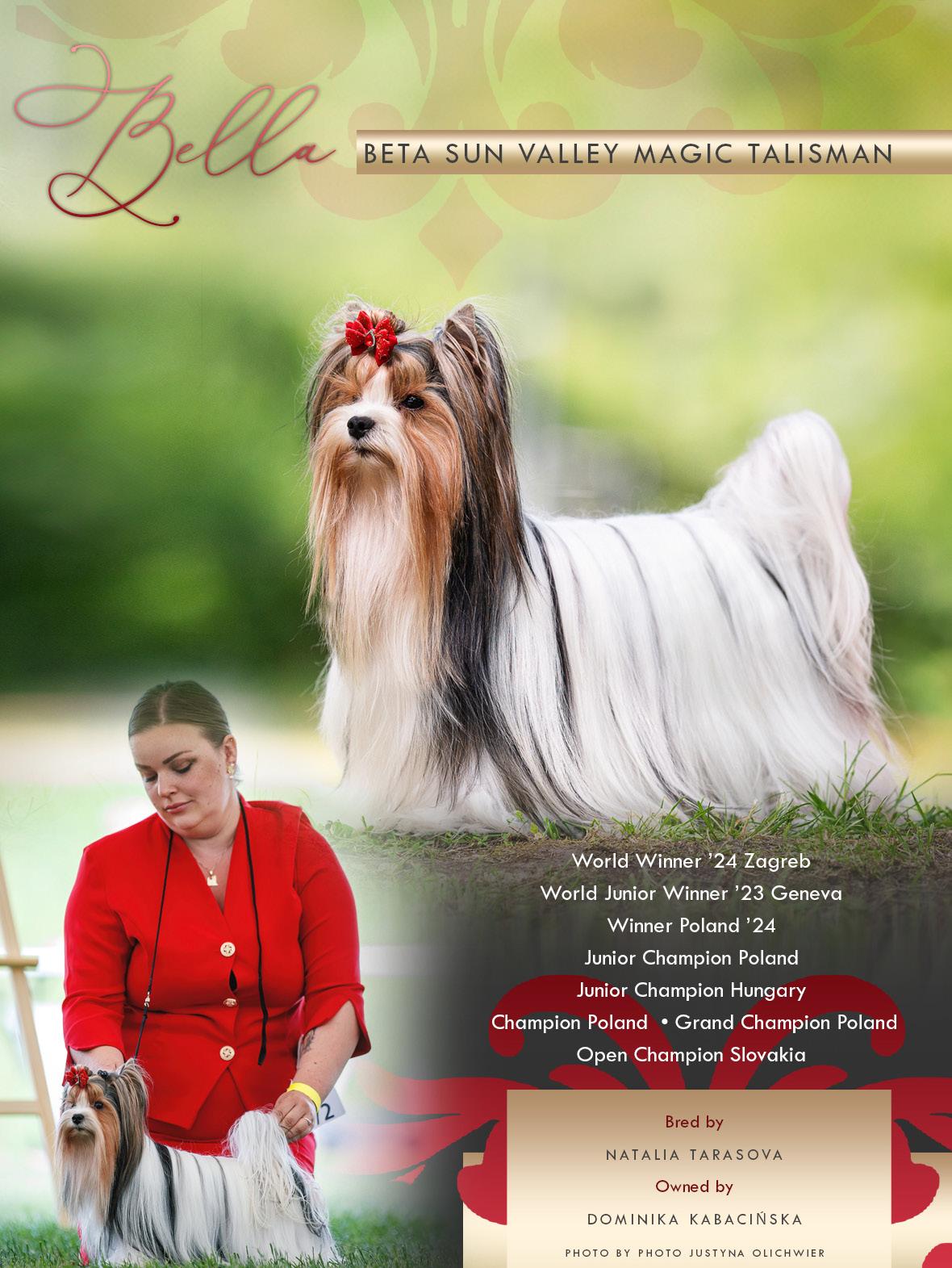
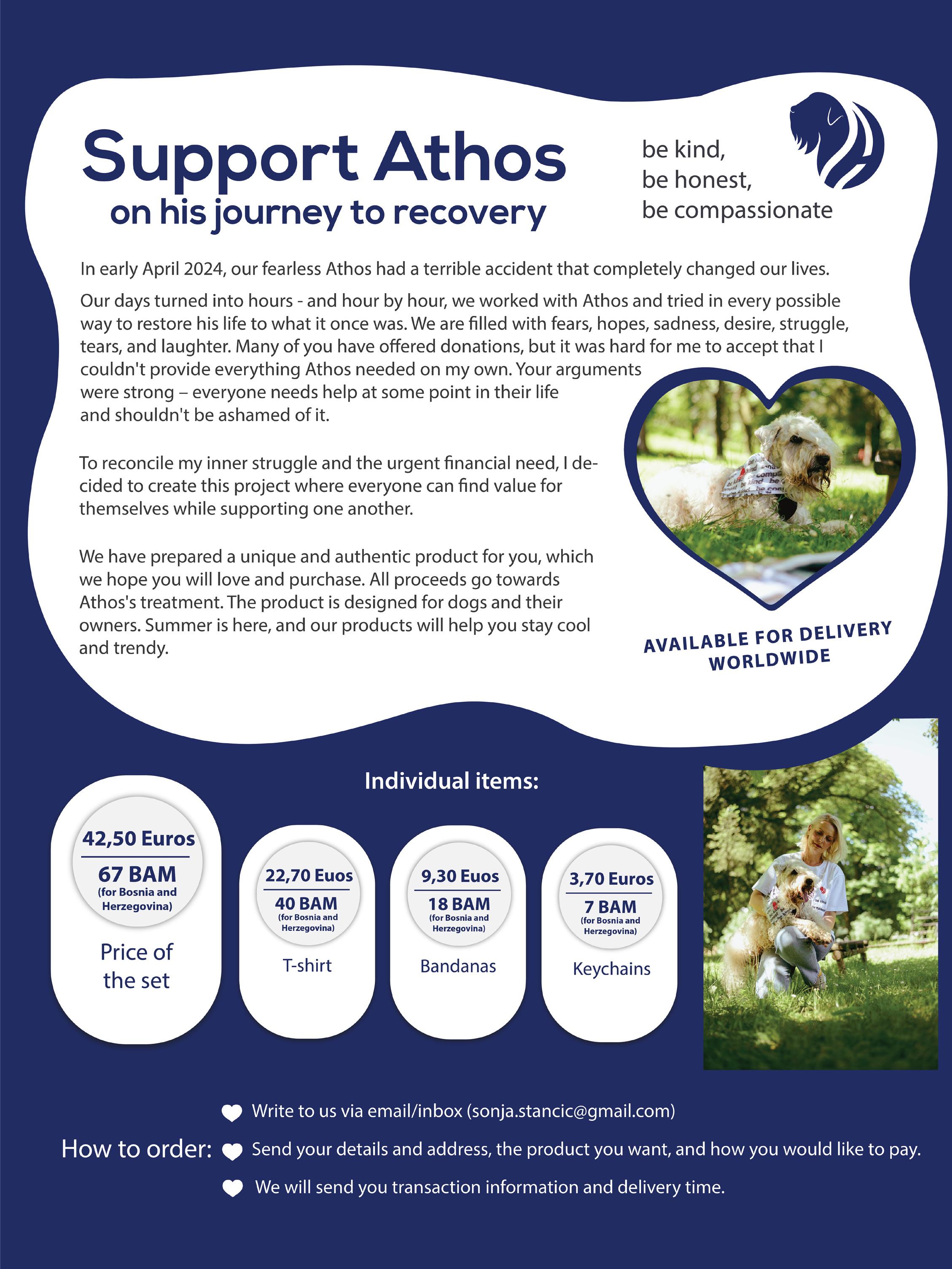
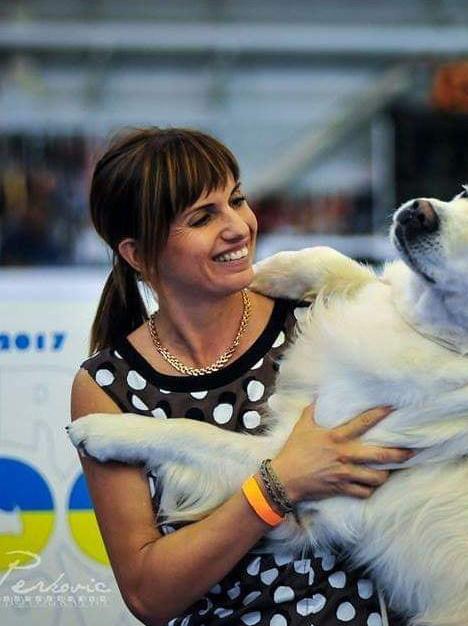

Can you take us through the beginnings of your journey with dogs—how it all started and what initially drew you to this world of canine companionship and compe-tition?
I remember very well when I was 9 years old and watched other people who owned and walked with their dogs where we lived in Eger. I started begging my parents for—at first, for magazines and books about dogs—and, of course, the next step was begging for a “real” dog. At that time, we lived in a flat, but I won the “battle” and got my first dog—an English Cocker Spaniel. She was a pedigree dog, but she did not have a correct bite, so she was shown only once. She was a lovely dog, and of course, we loved her because of her “fault.” My next dog was a conscious choice;
I had learned a lot from books, films, and people at shows, so my parents bought me my first Golden Retriever when I was 14 years old. He was amazing—truly a “once in a lifetime” dog, a true friend, with whom I reached the top, winning numerous Best in Shows, and he was even European Veteran Winner and Best Veteran in 2010. When he was 2 years old, it became clear that he would be followed by a lovely bitch, allow-ing me to start one of my dreams: to become a breeder and take the first steps toward my biggest dream since childhood—to become a Show Judge.
JUDITH BEKKE
Under the Sunnyfield name, you have been breeding Golden Retrievers. What stands out to you as the highlight of your breeding career?
Thank you for this question. I am really proud of all the litters and each puppy born in our care. I write “our” as it is a team effort, initially supported by my parents and, in the last decade, by my husband, and of course, all the owners of our furbabies. I am very proud of my first litter—born in 2005—where we had 4 International Champi-ons. Two of them became Veteran World Winners and Best Veteran in 2013. We have champions bred by us on almost every continent, and as a result of our dogs’ achieve-ments, Sunnyfield’s kennel has become a “Gold-Wreath Master Breeder,” the highest recognition by the Hungarian Kennel Club. And
last—but certainly not least—those Sunnyfield dogs who were the foundation of newly established kennels make me su-per proud, both in Hungary and in many foreign countries.
Please mention some of your most memorable assignments you have done so far.
I had the great honor of judging at two European dog shows. First, I judged Golden Retriever bitches in 2018 in Warsaw, where I had a superb quality (and quantity) of entries. I enjoyed every moment of it and was incredibly proud that my mentor, the late Mr. András Korózs, was sitting next to my ring and congratulated me after I chose the CACIB (European Winner) title.
I was also very proud to judge at the Budapest EDS in 2021. I judged the Minor Pup-pies, Puppies, Juniors, and Veteran Goldens. It was
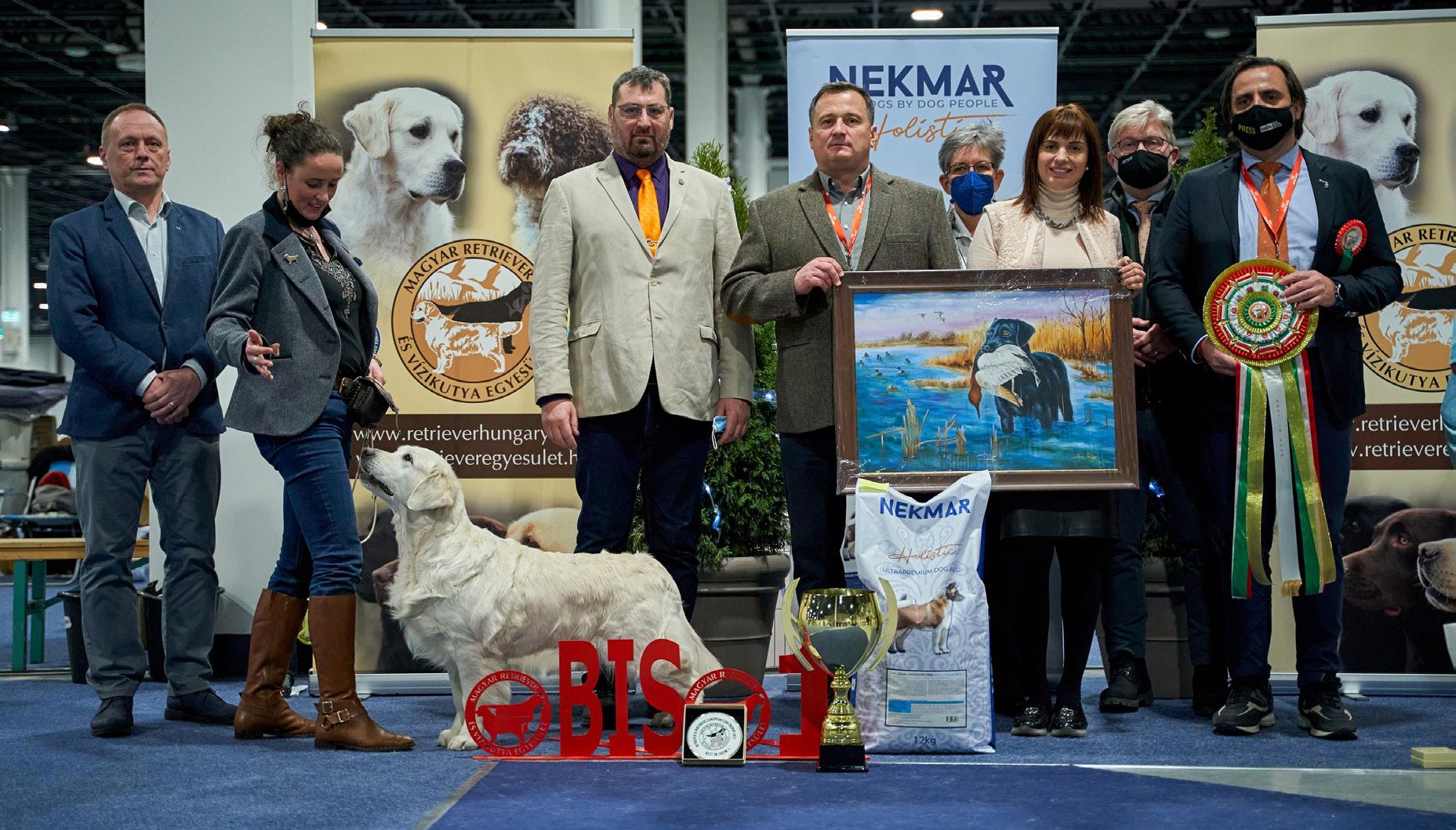
very exciting, with a variety of ages and a nice quality and quantity in each class.
I also received another honor when I was invited to Scotland and, by this invitation, became an ‘A’ list judge on The Kennel Club’s list for Golden Retrievers. Unfortu-nately, the show was canceled due to Covid-19, but I still hope for a bright future regarding it.
What do you wish every judge knew about Golden Retrievers before assessing them in the ring?
I love this question! First of all: the impression and the type. It’s a difficult breed due to its popularity and great variety. Types are mixed, but it is important to avoid extremities and exaggerat-ed specimens. The Golden Retriever is also a sound and balanced dog—a gundog! You should imagine them retrieving in the field and from water and reedy areas. They have a pleasant temperament and should be very outgoing with people and other dogs.
What 3 dogs from the past do you wish you could have judged or owned from anywhere in the world?
My all-time favorites in Golden Retrievers were all males: UK SH CH Ritzilyn Bran-don, MultiCH, EUW, WW Dewmist Silk Screen, and CH Jako’s Nordic Charm. I was so lucky to see them all live and also used them in my breeding lines.
The purpose of dog showing was (and should still be) to evaluate and “show off” breeding stock. Do you think for some breeders/owners it
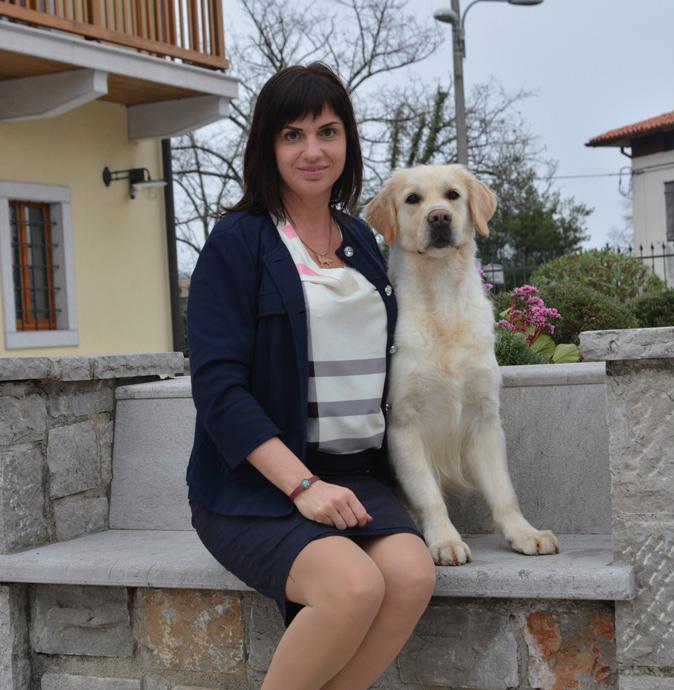
is becoming more about ribbons and rankings?
Yes, in the past, this was the only platform for showcasing dogs and breeding stock to the public. If they won, it was featured in magazines or on TV—if it was a big show. Nowadays, the internet and social media provide a free advertising network for eve-ryone. I also feel— as a breeder and as a judge—that some people are just collecting ribbons and rankings, uploading results weekend by weekend. And if it’s not on Fa-cebook, it didn’t happen—am I right?
Who are some judges who have significantly influenced your decision to judge and your approach to judging? What qualities do you admire most in their judging style?
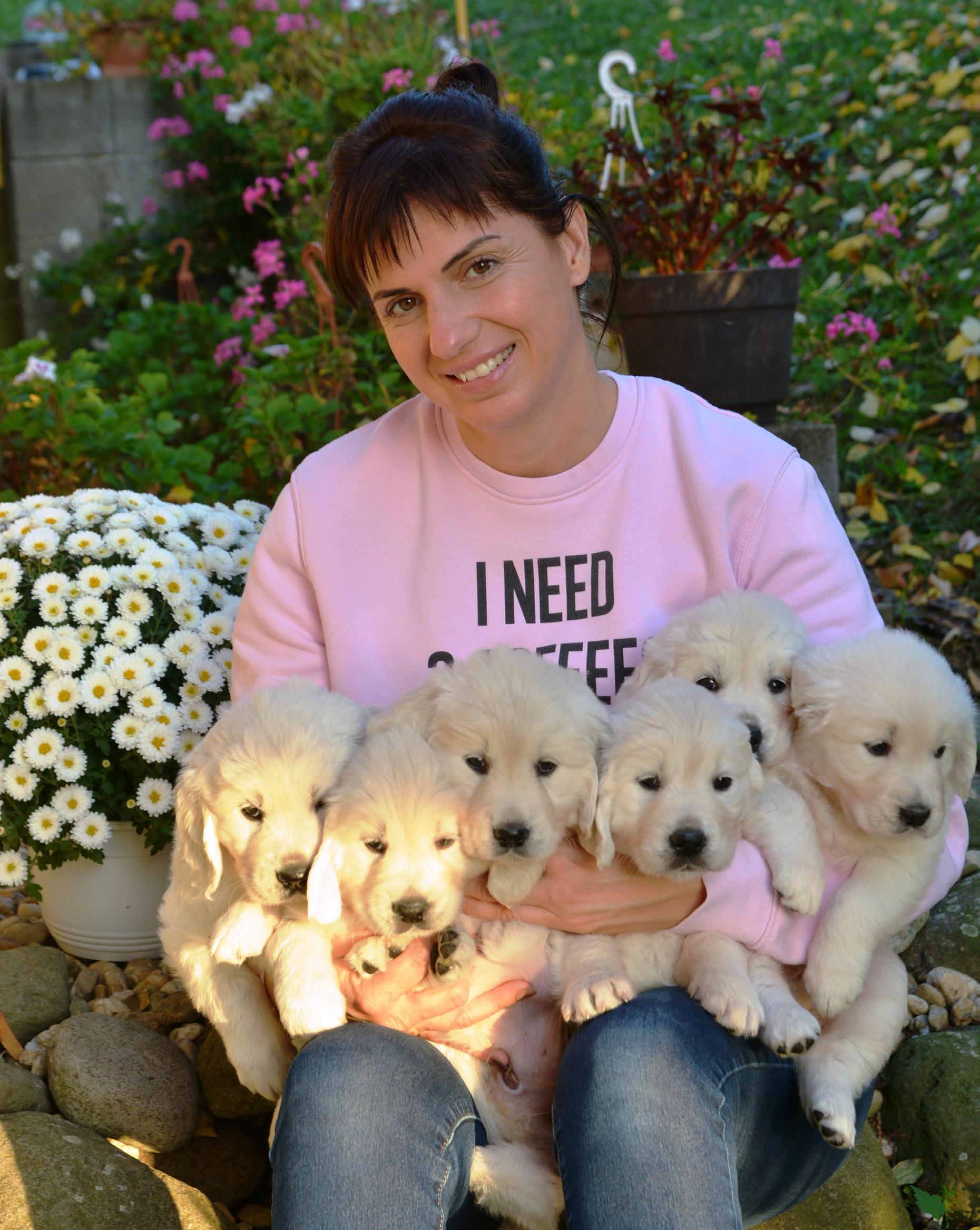
I have already mentioned the late Mr. András Korózs. He was my mentor and helped me a lot to “get the eye” for dogs. I am so thankful to him. He was also the one who always knew who would be the winner when the dogs entered the ring. I hope I learned it well. I would also like to mention two other people who had a great impact on me: Mr. Tamás Jakkel and Mr. Attila Czeglédi. During my course to become a judge, I learned all the important aspects, from dog anatomy to the style of judging, from them.
Is there a particular show in the world that you dream of judging?
As I am deeply involved in my breed, of course, Crufts.
What is the one thing that captivates you when you see a dog in the ring?
The first impression is very important to me—the style when the dog enters the ring.
What do you like to do most to relax and unwind?
My best relaxation at the moment is being at
INTERVIEW WITH JUDGE JUDITH BEKKE
home with my 6-month-old baby, Rose. With the support of my husband and family, I can also enjoy being with my dogs—taking them out for training and to the lake and fields where they enjoy being the most. That makes me relax.
What dish do you most enjoy preparing at home, and which one never fails to ex-cite you when you order it at a restaurant?
Salmon. That’s my favorite—whether it’s Finnish salmon soup or just a simple grilled salmon with salad. I have never been disappointed with that.
Lastly, amidst your judging experiences, have there been any humorous or light-hearted moments that stand out and you’d be willing to share?
I think the funniest moment was at a Budapest CACIB show in 2014. After awarding Best of Breed in the Labrador Retrievers, the owner was so happy that they let the dog run free in the ring. In the heat of joy, the dog knocked me over, and I fell in the middle of the ring. My feet hurt afterwards, so I had to change from high heels to flats for the afternoon Best in Show program.
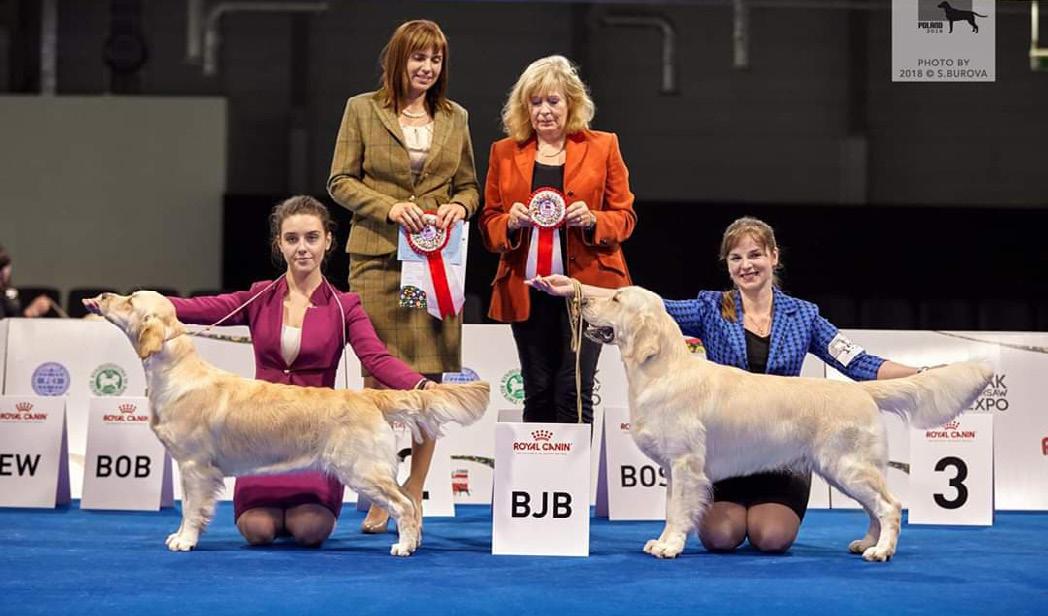
by breeder/owner Sonja Stancic
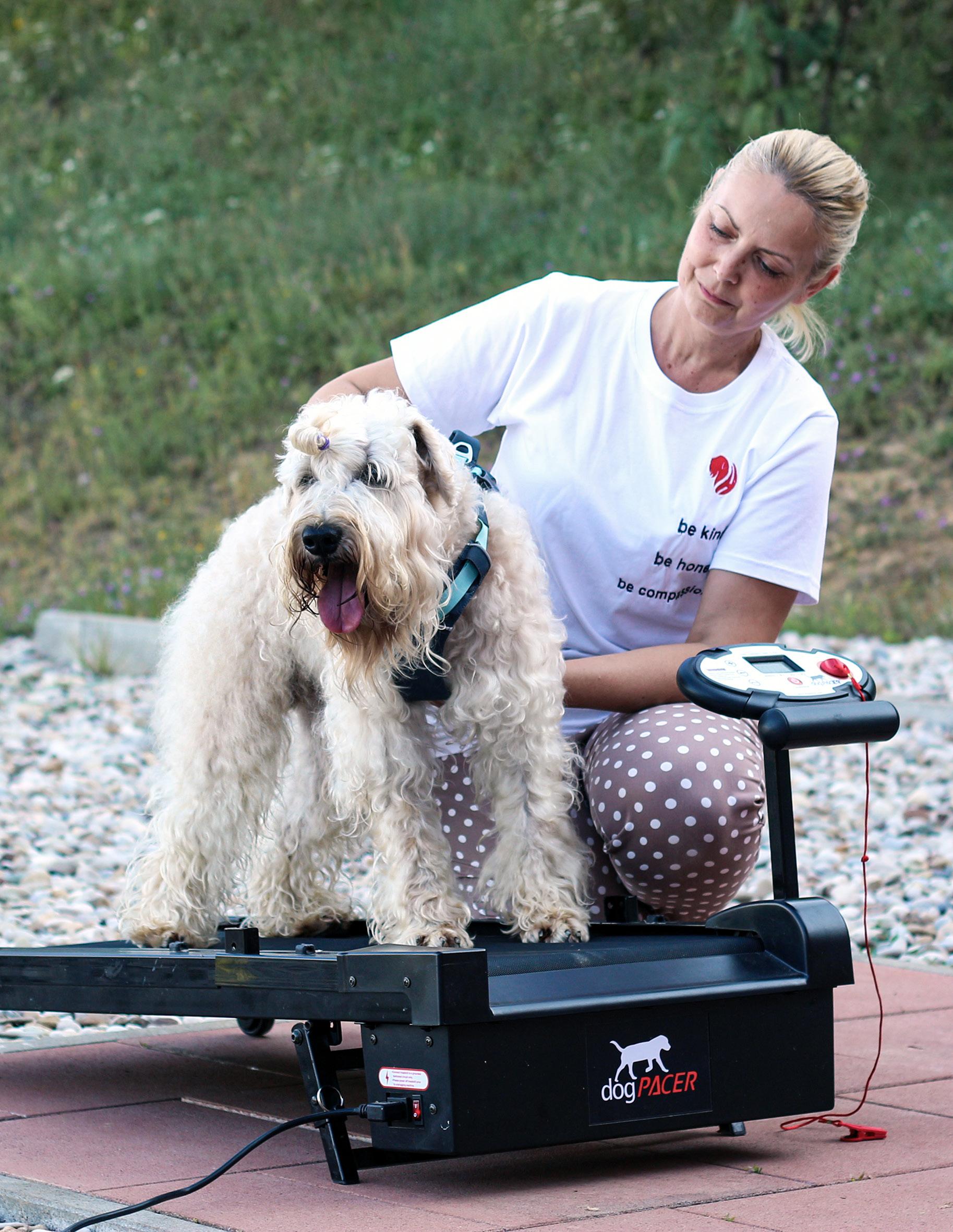

**Responsibility. Perseverance. Love.** These three words are often synonymous with success, victories, and the trophies and ribbons that adorn our shelves. However, sometimes life brings challenges we could never imagine. This is the story of one such challenge.
Our beloved Athos of Ziva’s Wheaten Home, on April 4th, 2024, suffered a severe, horrific injury that no one could have predicted. He had collided with a metal cart in the garden, and after that accident, he was clinically dead. Everything changed.
Just the night before, as I was preparing for a trip, I left Athos and the rest of the pack at home. Looking at them, I felt immense gratitude for having such dogs by my side. We were getting ready for the World Dog Show in Zagreb,
where Athos was the favorite in the champion class. He was in the best shape of his life.
On the morning of April 4th, at half-past seven, I received a call that changed everything. Athos was already on the operating table at the veterinary clinic, completely paralyzed, unable to move anything except his eyes. Those eyes, filled with pain and happiness because I was there with him, gave us the strength to fight. Our veterinarian, Dr. Mirko, did the impossible. Only later did we learn that what he did not only saved Athos’s life but also allowed him to progress.
Soon after, we headed to the nearest regional clinic, where a top veterinary professor worked. The journey across the border, a three-hour drive with a dog who was hypothermic, in severe pain, and with an unknown injury, became our
new challenge. However, the love and responsibility we felt towards Athos gave us the strength to endure. When you look into the eyes of those you love, nothing is impossible.
After we arrived at the clinic, Athos was stabilized again. That initial intervention was topnotch, but everything that followed felt like a cold shower and turned into a nightmare from which I didn’t think I would ever wake up. The day felt endlessly long, with no information at all. We begged for news about Athos, but instead of answers, we were met with rules that kept us in the dark. They didn’t allow us to see him, explaining that it might disturb him. And Athos, for the first time in his life, was in the hands of strangers, in an unfamiliar environment, completely powerless.
My husband and I were devastated. He was overwhelmed with guilt, and I with a sense of helplessness. To the clinic staff, we didn’t exist— we were just people from another country, small and insignificant. We did everything they asked, underwent all possible tests, but no diagnosis was made, nor did they give us any prognosis.
Finally, after four days, they sent us 500 kilometers away for an MRI, even though one was available just 10 minutes from the clinic. I realized that we were just guinea pigs to them. No one had any serious intention of dedicating themselves to our Athos. This feeling of betrayal and helplessness completely broke us, but we had no choice but to keep fighting for our Athos.
The next blow came in the form of an email from
the doctor, suggesting that euthanasia was the only solution. He had also communicated this verbally, but we never received a final report from the clinic, nor a report with the doctor’s signature and seal. We contacted other specialists, sent them the documentation, and all of them agreed that euthanasia was the only option. Moreover, some were extremely rude, even insulting, belittling, and mocking our relationship with Athos.
Despite this, we did not agree to euthanasia. For us, as long as Athos showed joy in life, he would continue to live. Upon returning home, Athos was livelier and happier than ever. In every video, his tail could be seen wagging joyfully.
In the first few days after returning home, Athos began showing signs of recovery. Some functions started to return—first and foremost, he was consistently able to breathe independently, swallow, his heart was functioning well, and both his urinary and digestive systems were working without interruption. Every small step forward confirmed that we had made the right decision to fight for his life.
Athos’s will to live, his joy, and his energy, despite everything he had been through, became our strongest argument against those who had written him off from the start.
After refusing euthanasia, I began my search for a solution. People offered different approaches, shared their experiences, and suggested various therapies. But as a scientist and professor of cognitive psychology, I prioritize science. Alternative methods can be helpful, but only as
a supplement, never as the basis for treatment.
Our understanding of cognitive, neurological, and other physiological processes greatly helped us determine the best therapy for Athos. Surgery was immediately ruled out, as there were no indications for it. Physical therapy and rehabilitation remained the only viable path to his recovery.
I must admit that, until then, I knew nothing about physical rehabilitation for injured dogs because my dogs had always been healthy. That’s when my search began. In Bosnia and Herzegovina, where I live, there are no veterinary neurologists, and physical therapy and rehabilitation are difficult to come by. I researched everything available in the region, but information was scarce and often relied on conflicting word-ofmouth recommendations.
We contacted the Milat veterinary family from Pula, who were the only ones willing to work with Athos despite the unclear diagnosis. From the very first contact, they were reassuring and reasonable, providing us with all available options in the region, including those closer to our home, while also praising other colleagues. Their openness and professionalism were crucial in our decision-making process.
In the meantime, we got in touch with a neurologist from the U.S. who was in the region. He reviewed Athos’s medical records and MRI scans, discovering that the initial diagnosis was completely wrong. Had it been correct, Athos would have been dead within 72 hours, while we were

already on the tenth day after the injury. This discovery both broke and uplifted us. I will never understand why the colleague—because we are also university professors, albeit in a different field of cognitive psychology—coldly recommended euthanasia without truly committing to the situation. After nearly 30 years in his career, his superficial approach and lack of desire for a thorough examination left a bitter taste. What if I had listened to him and later found out the truth?
There was no time to wait. Although we had arranged an urgent trip to Pula, we had to postpone it because Athos developed bleeding in his digestive tract due to the large amount of painkillers. Our veterinarian insisted that he should not travel until he was stable. With continuous care and therapy, we managed to stabilize him

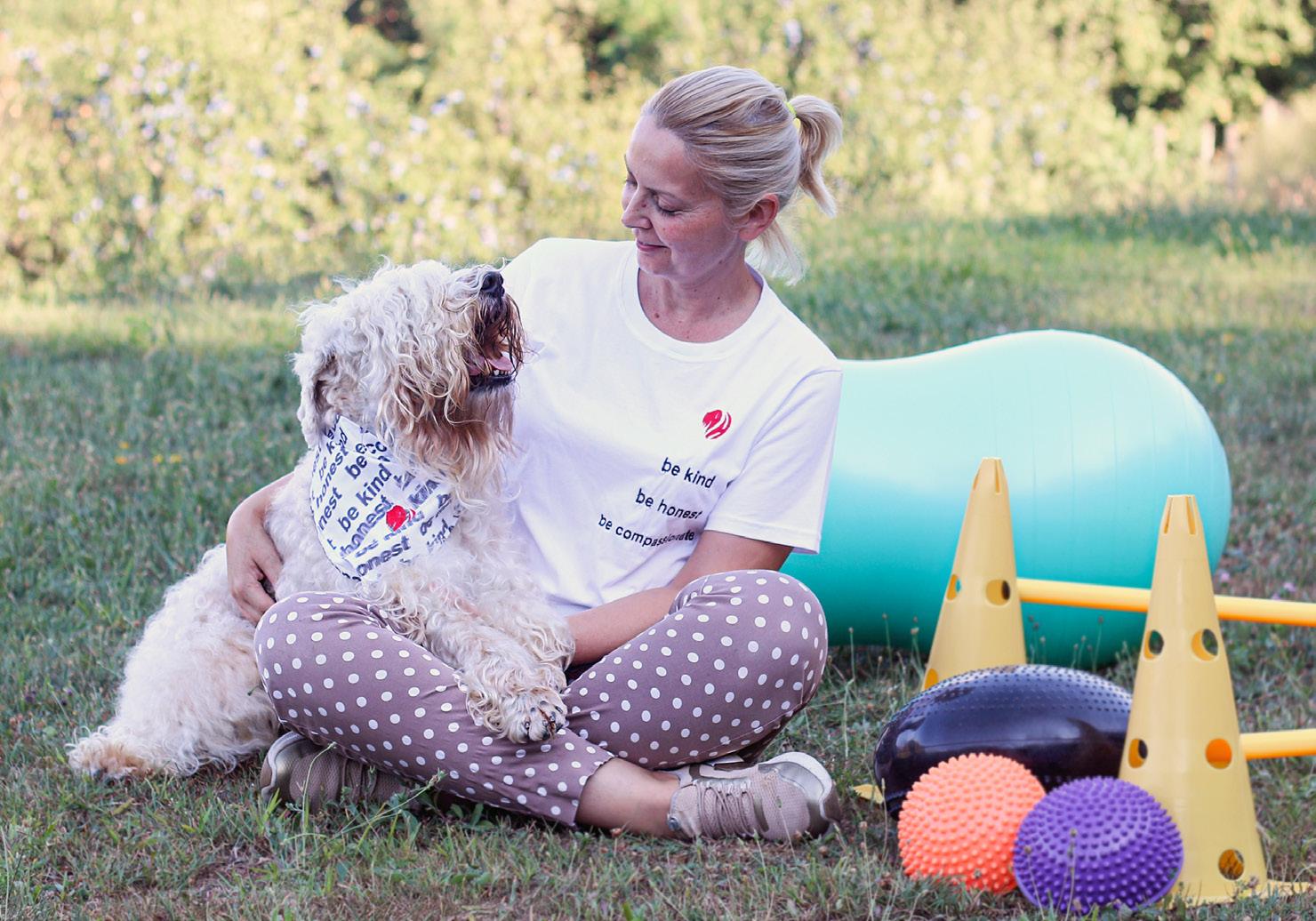
in four days, and on the fifth day, we finally set off on our journey.
Our story is one of perseverance, love, and faith in science. Every step towards Athos’s recovery was a small triumph over those who had written him off. Athos proved that, with the right care and determination, life can prevail even in the most difficult times.
Athos arrived for therapy as a tetraparetic dog, but he was cheerful, did not resist the therapy, and cooperated in every aspect. Even when it was toughest, he would lick and kiss the therapists. We didn’t know what to expect or what the prognosis would be. The injury was such that there were no guarantees, especially due to the lack of a neurologist experienced in treating such patients.
We spent the first four days in therapy and then, as a family, we temporarily moved to Pula for 15 days to minimize Athos’s stress. He is extremely attached to the rest of the pack, with a special bond with each of his “girls.” He adores his sister Belka the most, with whom he has been inseparable for seven years. The days felt like months because caring for a completely immobile dog requires tremendous effort, just as caring for any critical patient does.
My first education is in the medical field and my second in psychology, but despite that, the path we took was extremely challenging both physically and mentally. I now realize that it’s a path few choose to take. When people told me we were brave or complimented us, it felt strange. I thought it was normal, that it’s the way it should be. If I’m with my dog when he’s winning awards,
walking in the woods, or resting on a pillow, isn’t it natural to help him when he needs it most?
For me, there was no other option. In moments when Athos was completely helpless, I found the strength to give him everything he needed unconditionally, just as he would have done for me. The love for our dog isn’t just in the happy moments but also in the toughest ones when life presents us with the greatest challenges.
After an intensive 15-day therapy period in Pula, our lives turned into a constant commute between Banja Luka and Pula. Every week, we spent four days in Pula and three days in Banja Luka. The 500-kilometer distance became our daily routine, all while continuing our work as professors. Our students didn’t notice any changes in our professional lives, but our private lives changed drastically and became unrecognizable.
I had to close my small business, which had provided a stable income, and we sold our car and many other belongings. Friends we had known for years distanced themselves from us, unable to understand or see the care for a dog as necessary. We received support through social media and messages, which meant a lot to us, but that support didn’t pay the bills or buy food.
In that emotional whirlwind and sleepless nights, it was meaningful to hear someone say, “Well done!” but we found ourselves in a very lonely situation. Our previous life, finances, friends, and acquaintances—all of it melted away and disappeared. What remained was our belief that
a helpless being like Athos deserved all our support, attention, and effort. Fortunately, there were still a few people who understood that we had no other choice but to follow the path we had chosen.
Every day was a challenge in terms of therapy, supplementation, food, exercise equipment at home, additional procedures, and alternative therapies that we implemented. Our days were filled with organizing activities for Athos and caring for him, with every moment dedicated to his recovery. This struggle redefined our lives, bringing new trials but also an unwavering determination to give him everything he deserved.
Daily life became a battle with time and resources—most days I spent at home with the dogs or on the road, trying to maintain a balance between responsibilities and caring for Athos. Even though we took out a loan to cover the costs of therapy and care, the financial burden has been growing every day.
In this situation, I realized that I needed to find a way to combine my love for dogs with practical needs. This is how the project “Be Kind - Be Honest - Be Compassionate” was born—out of a desire to create something that would help us, as well as others who love and care for their pets. Through this project, I aim to connect people who share the same passion and who understand the importance of support, both emotional and practical, during the most difficult times.
My goal is not only to improve our financial situation but also to create a community where em-
pathy comes first, where we can support each other in our love for our four-legged friends. This project is proof that even in the most challenging circumstances, we can find a way to fight, build, and help not only ourselves but others as well.
As I write this, Athos has finally stood on his own feet. However, our journey to full recovery is far from over—we still don’t have a neurologist to monitor his case, and the 500-kilometer travel has become routine. Now, caring for Athos is even more intense, requiring more resources, both physical and emotional.
His progress is remarkable, especially considering the severity of the injury. Athos responds surprisingly well to therapies, but we know that in neurological injuries, time is a critical factor. Every moment when his overall condition is stable,
we use for as much targeted physical therapy as possible. Unfortunately, we often face complications that slow us down, such as the struvite stones in his bladder, which took away the entire month of July from exercising. Such complications are almost inevitable given the long period of lying down and limited movement.
Nevertheless, we are not giving up. Now that this obstacle is behind us, we are focusing on new steps and therapies. The project I started has received positive feedback, and I am constantly adjusting it to make it interesting and useful for dogs and their owners. My wish is for this project to thrive and for the dog community to show great interest because that would mean we could finally take a breath and reduce the anxiety that weighs on us. I truly hope people will understand the reality we are fac-
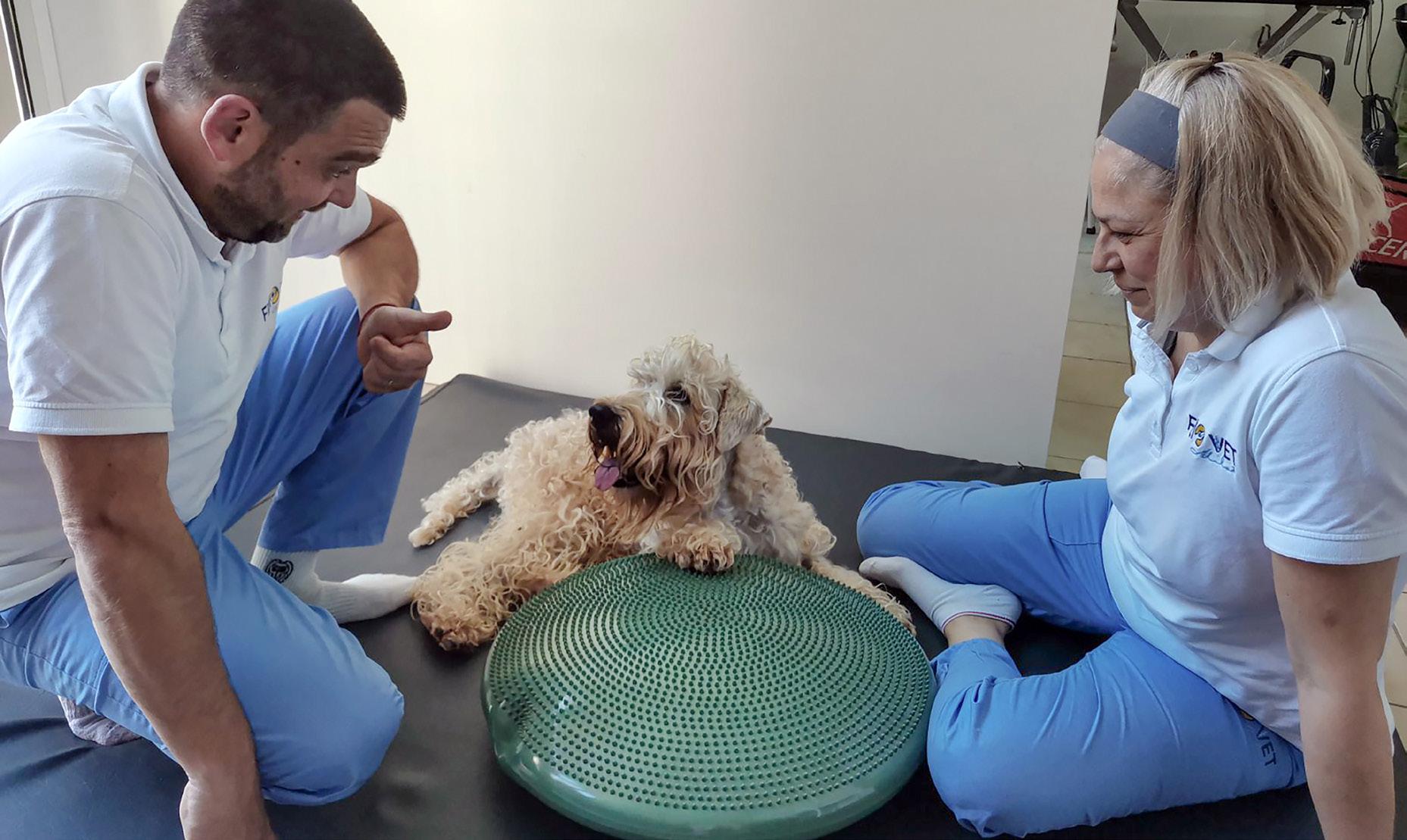
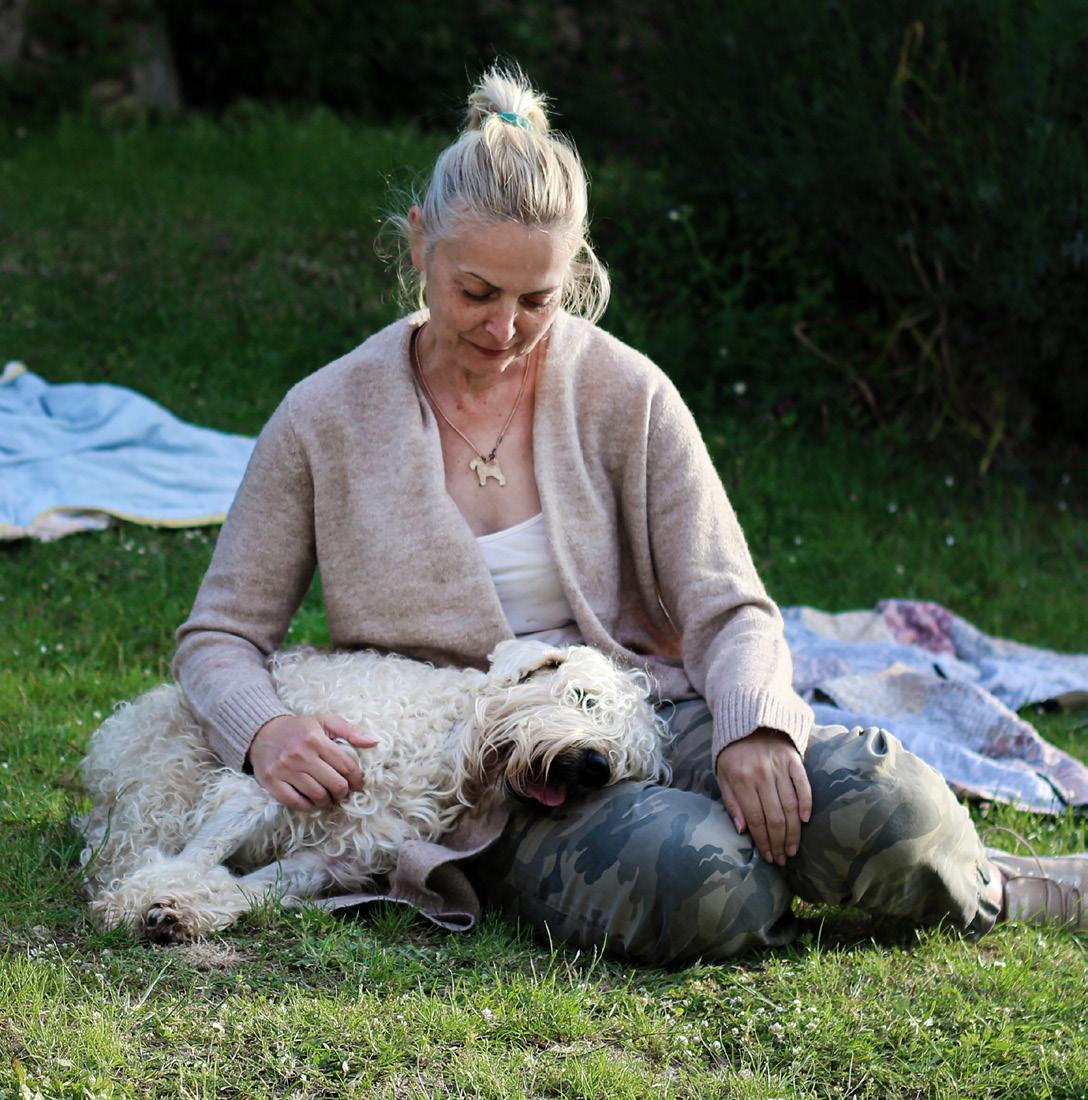
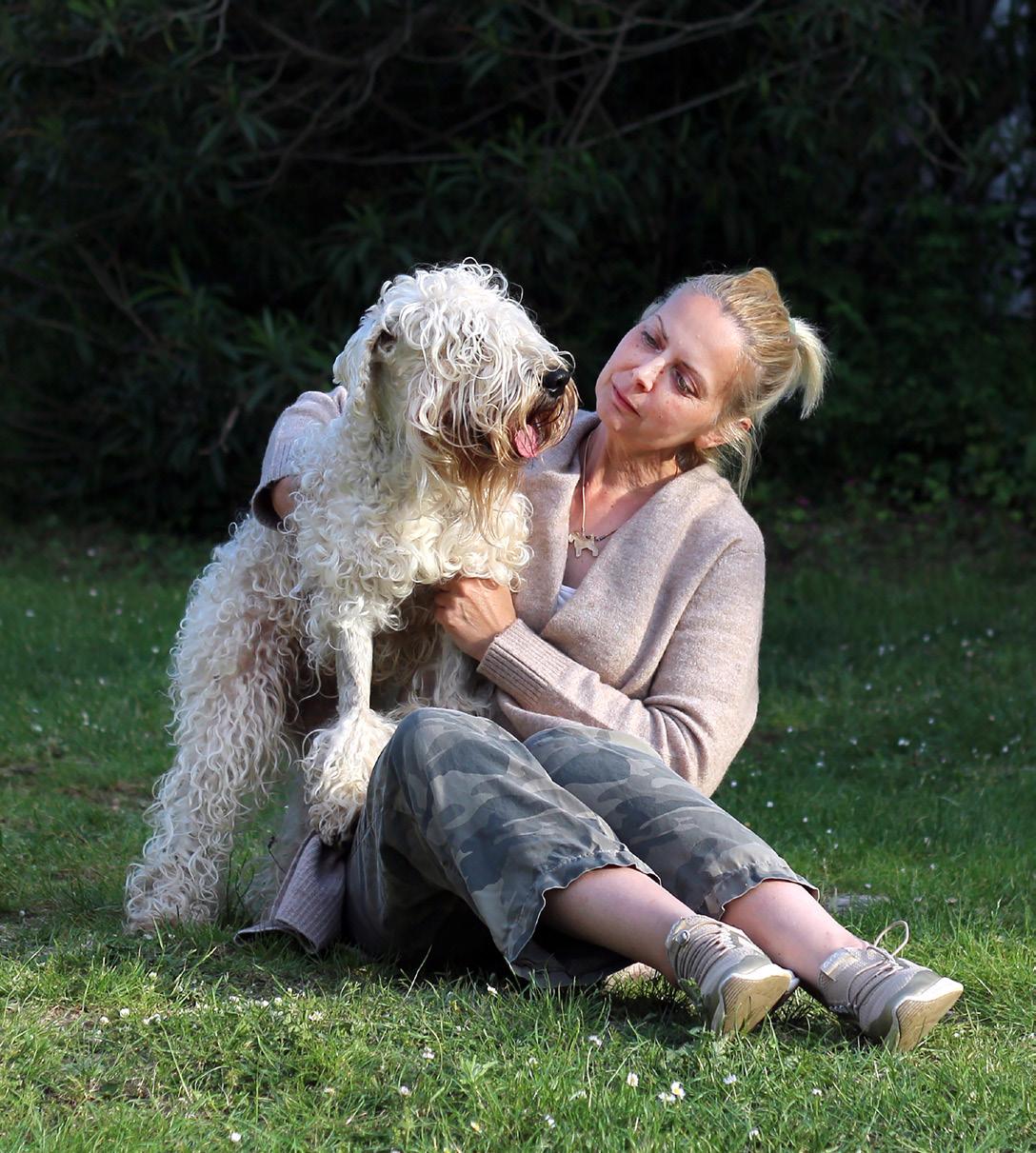
ing—in the past four months, we have invested around 20,000 euros in treatment and various necessities to make the therapy as successful as possible. It might not be a large sum for some, but for professors from this part of Europe, it is an enormous amount, especially when you don’t have time to earn it but have to spend it.
When facing the toughest challenges, the most important thing is often the strength of will and the courage not to give up. Our fight for Athos’s life shows that true love and dedication can overcome the darkest prognoses and bring light into the darkest moments. As long as there is hope and a will to live, we must never give up. For within every challenge lies the opportunity for an incredible victory and proof that miracles truly exist.

“Discovering the Charm of Dijon”
Nestled in the heart of France’s Burgundy region, Dijon is a city steeped in history, culture, and gastronomy. As the former capital of the Dukes of Burgundy, it offers a rich tapestry of architectural marvels, world-class museums, and delectable cuisine. If you’re planning a trip to this charming city, here’s a comprehensive guide to help you navigate its many attractions.
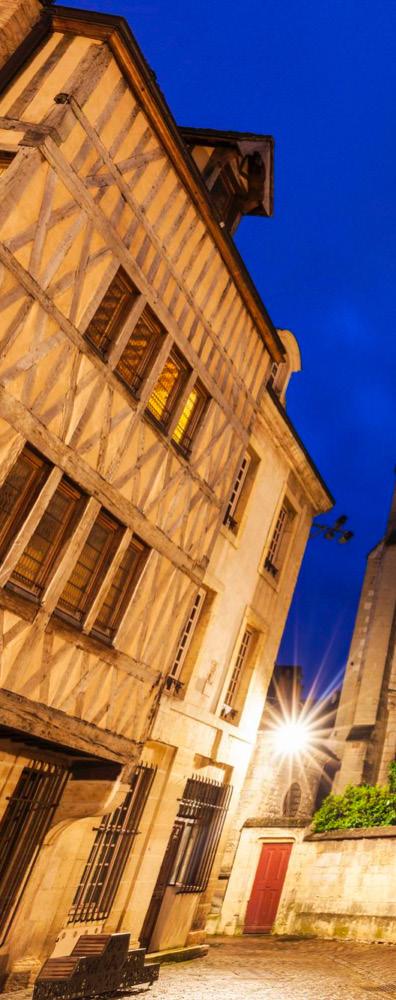
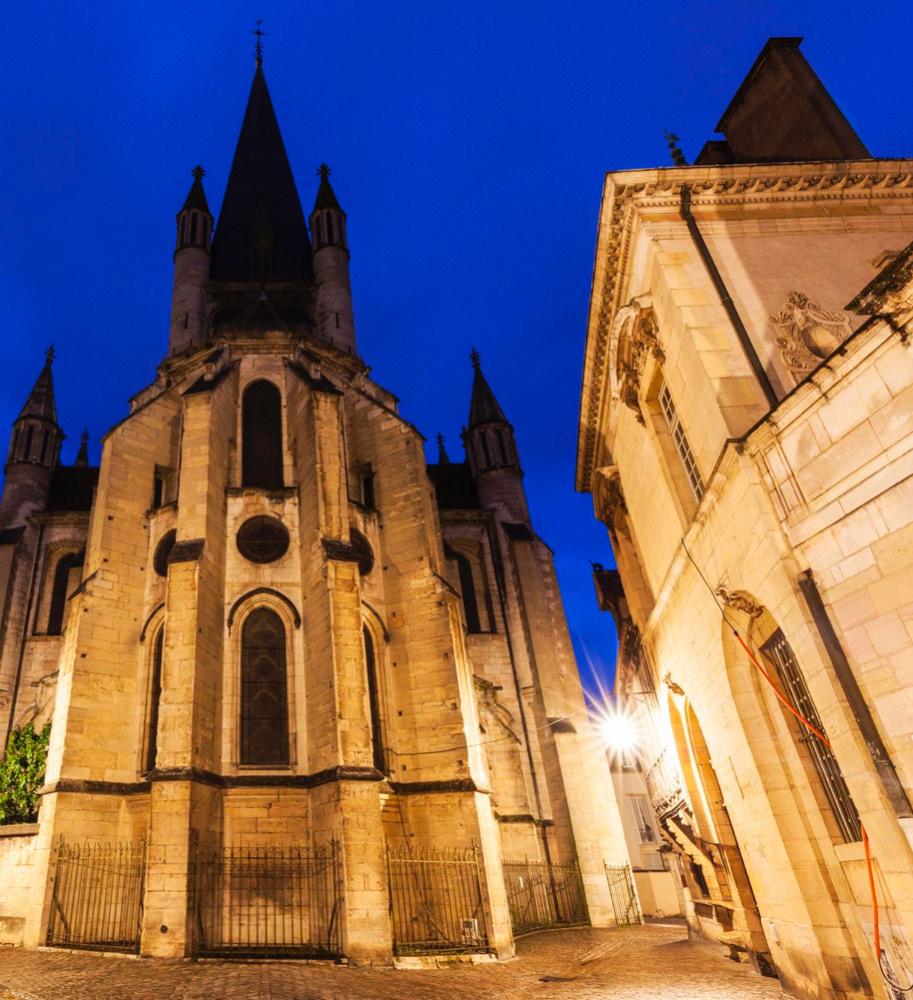
1. Explore the Historic Center
Place de la Libération: Start your journey at Place de la Libération, the grand square that epitomizes Dijon’s historical grandeur. Surrounded by elegant buildings, including the Palais des Ducs de Bourgogne (Duke’s Palace), this square is perfect for absorbing the city’s ambiance. The Palais, once the seat of Burgundy’s powerful dukes, is now home to the Musée des Beaux-Arts (Museum of Fine Arts). Don’t miss the chance to wander through its courtyards and gardens.
Rue des Forges: Adjacent to Place de la Libération, Rue des Forges offers a glimpse into medieval Dijon. The narrow, cobbled street is lined with charming shops and cafes. Look out for the beautifully restored medieval buildings and quaint boutiques.
2. Delve into Dijon’s Museums
Musée des Beaux-Arts: Located within the Palais des Ducs, this museum boasts an impressive collection of European art, spanning from antiquity to the modern era. Highlights include works by renowned artists such as Monet, Delacroix, and Veronese. The museum’s varied collection makes it a must-visit for art lovers.
Musée de la Vie Bourguignonne: For a deeper understanding of local culture, visit the Musée de la Vie Bourguignonne. This museum, housed in a former 17th-century convent, explores the daily life and traditions of the Burgundy region through an extensive collection of period artifacts and interactive displays.

Les Halles de Dijon: Food enthusiasts will revel in a visit to Les Halles, Dijon’s vibrant market housed in a striking steel and glass building designed by the famous architect Gustave Eiffel. Open daily, the market offers an array of local produce, from cheeses and meats to fresh produce and pastries. Sampling local specialties like Dijon mustard is a must.
Local Dining: For a true taste of Burgundy, dine at a traditional bistro or brasserie. Try local specialties such as boeuf bourguignon (beef stew braised in red wine), coq au vin (chicken in wine), and the region’s famous escargots. Pair your meal with a glass of Burgundy wine for an authentic experience.
Notre-Dame de Dijon: This Gothic masterpiece, built between the 13th and 15th centuries, is known for its stunning façade and intricately carved sculptures. Don’t miss the Jacquemart clock tower, which chimes on the hour and features two automaton figures striking the bell.
Tour Philippe le Bon: Climb to the top of this 15th-century tower for panoramic views of Dijon and its surroundings. The climb is a bit strenuous, but the breathtaking views of the city and the Burgundy countryside are well worth the effort.

Jardin Darcy: A beautiful 19th-century park, Jardin Darcy is the perfect spot for a leisurely stroll or a picnic. The park features manicured lawns, flower beds, and a charming fountain, providing a serene escape from the urban bustle.
Parc de la Colombière: Another lovely green space, Parc de la Colombière offers expansive lawns, walking paths, and a large pond. It’s an ideal location for a relaxing afternoon and offers plenty of space for families and picnickers.
Rue des Forges: This picturesque street is lined with medieval buildings and vibrant shops. Take a leisurely stroll to soak up the city’s historical atmosphere and discover hidden gems along the way.
Place de la République: A lively square surrounded by shops and cafes, Place de la République is a great place to people-watch and enjoy a coffee. The square’s modern architecture contrasts nicely with the city’s historic buildings, offering a glimpse of Dijon’s evolving character.
Festival International des Arts de Dijon: Held annually, this festival celebrates the arts with a diverse program of music, theater, and dance performances. Check the festival schedule to coincide your visit with this cultural extravaganza.
Dijon Wine Auction: For wine enthusiasts, the annual wine auction in Dijon is an event not to be missed. It’s a chance to taste and purchase some of the finest Burgundy wines while participating in a cherished local tradition.
8. Enjoy a Day Trip to the Surrounding Countryside
Côte de Nuits Wine Route: A short drive from Dijon, the Côte de Nuits wine route offers a scenic journey through Burgundy’s premier wine-producing region. Visit local vineyards, taste exquisite wines, and learn about the re-
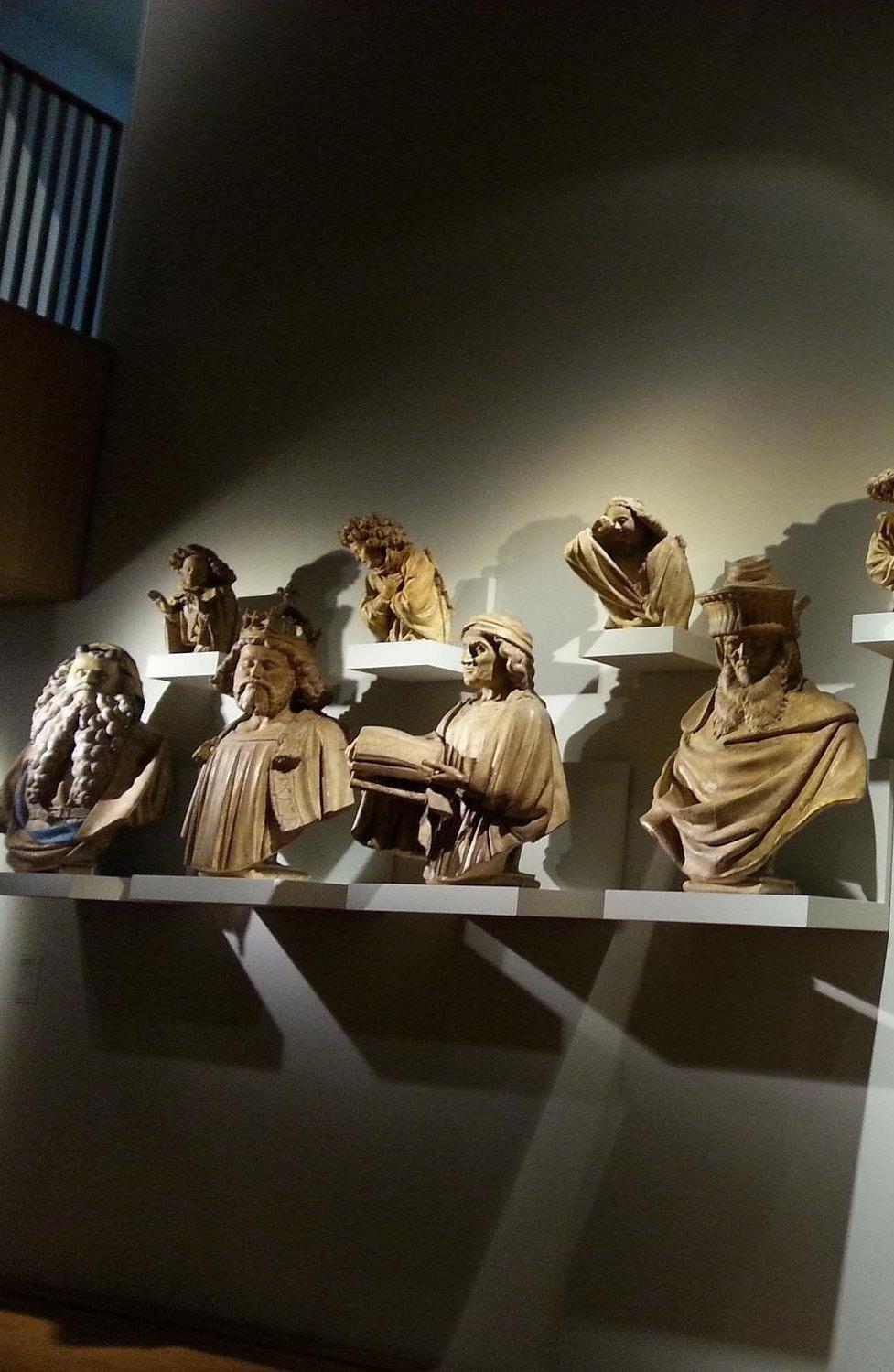
gion’s viticultural heritage.
Châteauneuf-en-Auxois: This medieval village, located about an hour from Dijon, features a beautifully preserved castle and charming streets. It’s a perfect destination for a day trip to explore more of Burgundy’s historical and architectural treasures.
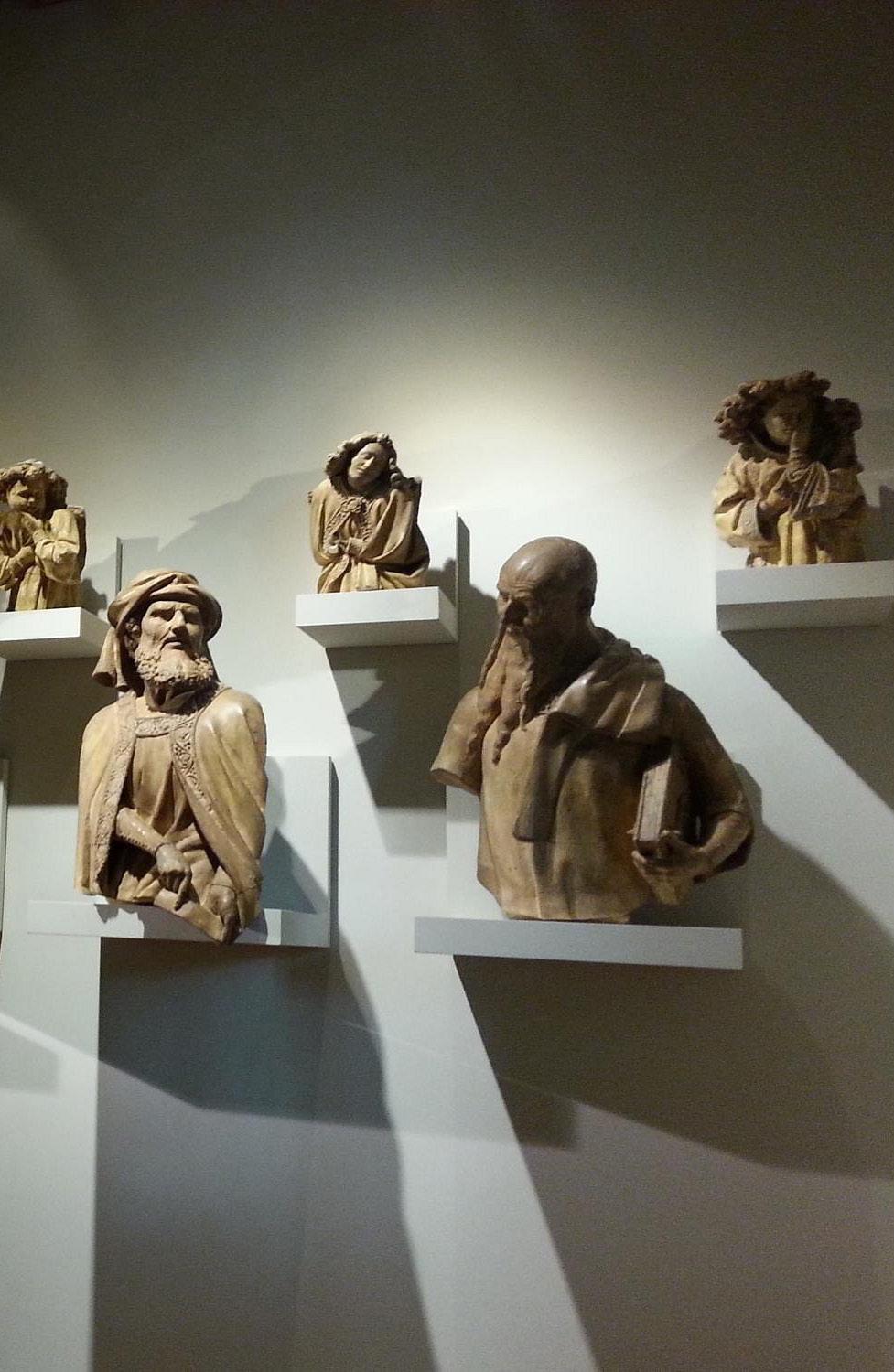
Dijon is a city that effortlessly combines historical richness with vibrant culture and gastronomy. From its stunning architecture and world-class museums to its bustling markets and culinary delights, Dijon offers a wealth of experiences for every traveler. Whether you’re an art aficionado, a history buff, or a food lover, this enchanting city in the heart of Burgundy promises a memorable visit. So pack your bags, bring your curiosity, and get ready to uncover the many layers of Dijon’s charm.
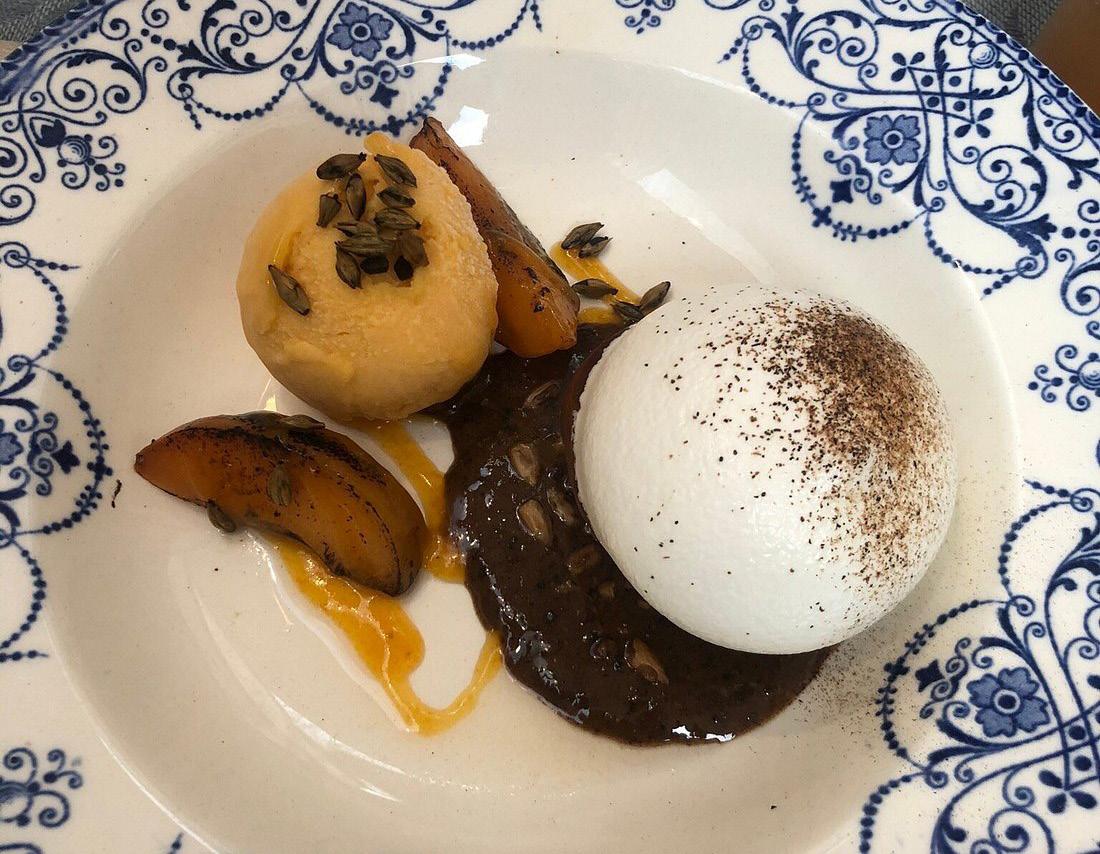
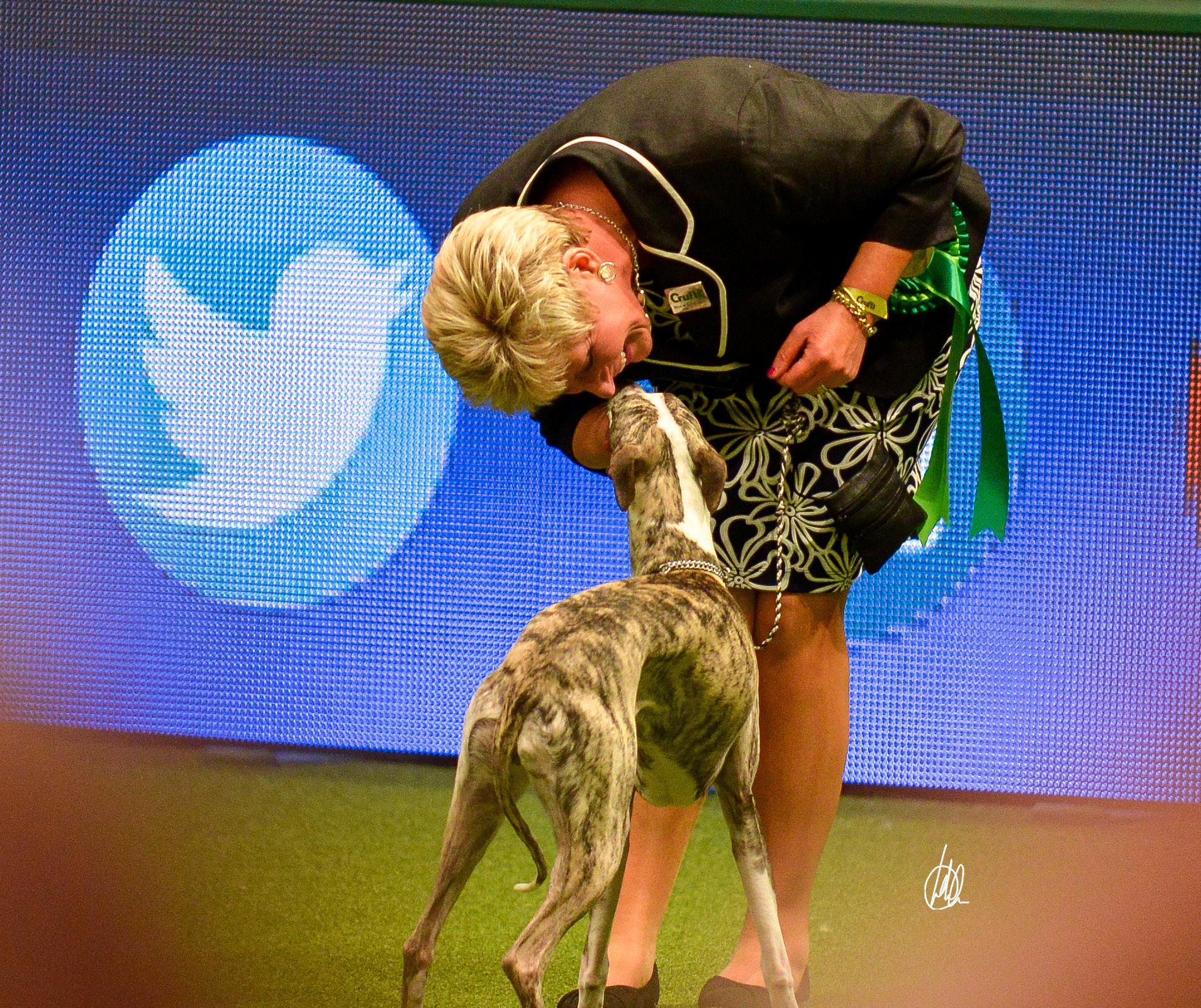
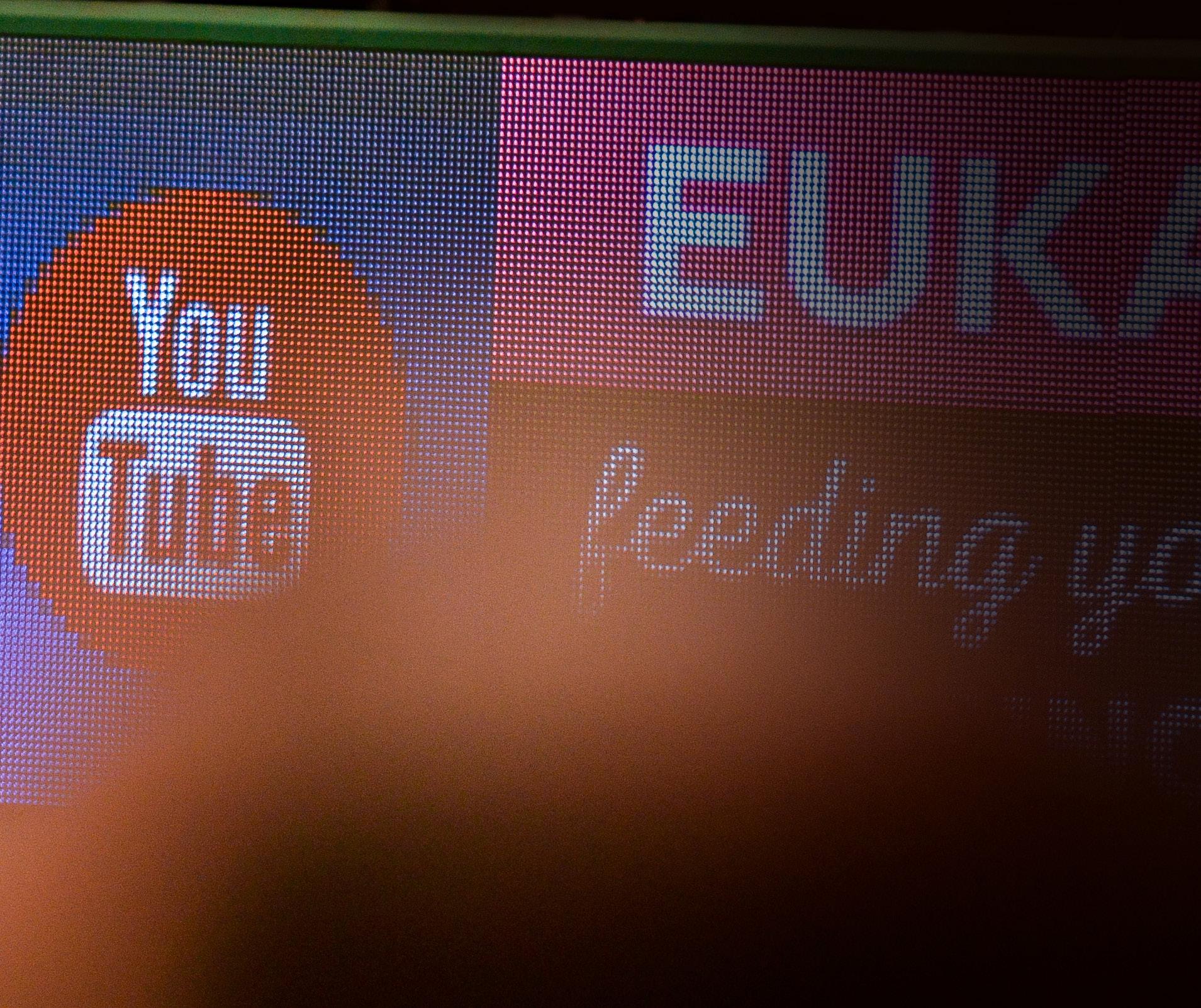
SEPTEMBER-OCTOBER
ARMENIA
Yerevan, 14-15 Oct
AZERBAIJAN
Baku, 27-28 Sep
BELARUS
Minsk, 6-7 Sep
BELGIUM
Mons, 4-5 Oct
Leuven, 25-26 Oct
BOSNIA AND HERZEGOVINA
Domaljevac, 10-11 Sep
Gradacac, 10-11 Oct
BULGARIA
Dobritsh, 20-21 Sep
CROATIA
Osijek, 13-14 Sep
Karlovac, 27-28 Sep
CYPRUS
Lefkara, 17-18-19 Oct
CZECH REPUBLIC
Olomouc, 13-14 Sep
Klatovy, 20-21 Sep
Ceske Budejovice, 4-5 Oct
DENMARK
Roskilde, 20-21 Sep
ESTONIA
Tallinn, 13-14 Sep
Tallinn, 18-19 Oct
FINLAND
Eckerö, 27-28 Sep
Seinäjoki, 25-26 Oct
FRANCE
Dijon, 28 Sep
Châteauroux, 4-5 Oct
Beziers, 12 Oct
Poitiers, 18-19 Oct
GEORGIA
Tbilisi, 11-12 Oct
GERMANY
Rostock, 4-5 Oct
GREECE
Athens, 9-10-11-12 Oct
HUNGARY
Kecskemét, 19-20-21 Sep
Komárom, 3-4-5 Oct
Hódmezovásárhely, 17-18-19 Oct
ICELAND
Reykjavik, 4-5 Oct
IRELAND
Dublin, 4 Oct
Haifa, 31 Oct-1 Nov
ITALY
Frosinone, 13 Sep
Roma, 14 Sep
Grosseto, 19 Sep
Genova, 21 Sep
Montesilvano, 26-27-28 Sep
Avellino, 5 Oct
Caserta, 12 Oct
Bergamo, 18 Oct
Sassari, 19 Oct
Reggio di Calabria, 25 Oct
Messina, 26 Oct
Busto Arsizio, 31 Oct
KAZAKHSTAN
Almaty, 13-14 Sep
Astana, 20-21 Sep
KIRGHIZISTAN
Bischkek, 26-27-28 Sep
KOSOVO
Prishtina, 8-9 Oct
LATVIA
Beirut, 11-12 Oct
LITHUANIA
Palanga, 19-20-21 Sep
Nikšic, 27-28 Sep
Podgorica, 24 Oct
Podgorica, 26 Oct
Skopje, 11-12 Oct
Orre, 6-7 Sep
POLAND
Przemysl, 13-14 Sep
Wroclaw, 27-28 Sep
Targu Mures, 12-13-14 Sep
San Marino, 20-21 Sep
SERBIA
Leskovac, 14 Sep
Gornji Milanovac, 20-21 Sep
Novi Sad, 28 Sep
Cuprija, 4 Oct
Krusevac, 5 Oct
Turija, 11 Oct
Backa Topola, 12 Oct
SLOVAKIA
Bratislava, 24-25-26 Oct
SLOVENIA
Šempeter pri Gorici, 3-4-5 Oct
SPAIN
Bilbao, 7 Sep
Leon, 27 Sep
Merida (Badajoz), 20 Oct
Valls (Tarragona), 25-26 Oct
SWEDEN
Växjö, 31 Oct-1-2 Nov
THE NETHERLANDS
Maastricht, 27-28 Sep
UZBEKISTAN
Tashkent, 3 Oct
Tashkent, 4 Oct
Tashkent, 5 Oct
THE AMERICAS & CARIBBEAN
ARGENTINA
Santa Fe, 7 Sep
Rosario, 5 Oct
CHILE
Santiago, 11-12 Oct
MEXICO
Ciudad De Mexico, 18-19-20-21 Sep
PANAMA
Panama, 12-13 Oct
PERU
Chiclayo, 21 Sep
Lima, 19 Oct
AUSTRALIA
Brisbane, 20 sep
Brisbane, 5 Oct
Perth, 11-12 Oct
NDalian City, 12 Sep
Dalian City, 13-14 Sep
Langfang City, 23-24-25-26 Oct
JAPAN
Kumagaya, 13 Oct
Asakuchi, 26 Oct
KOREA (REPUBLIC OF)
Iksan, 11 Oct
Iksan, 12 Oct
MALAYSIA
Kuala Lumpur, 26 Sep
Kuala Lumpur, 27 Sep Kuala Lumpur (FCI Asia, Africa & Oceania Section Show), 28 Sep
PHILIPPINES
Marikina City, 20 Sep
Marikina City, 21 Sep
Tainan, 14 Sep
Taipei, 12 Oct
